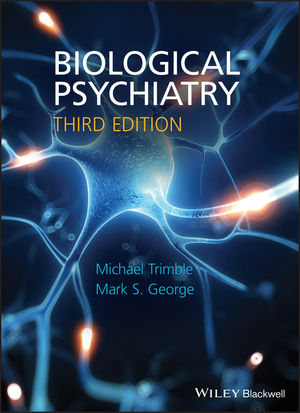Biological Psychiatry, 3rd EditionISBN: 978-0-470-68894-6
Hardcover
432 pages
October 2010
 |
||||||
Acknowledgements xi
Quotations xiii
Preface to the First Edition xv
Preface to the Second Edition xix
Introduction and Preface to the Third Edition xxi
1 Principles of Brain Function and Structure: 1 Genetics, Physiology and Chemistry 1
Introduction 1
Genetics 1
Brain chemistry and metabolism 8
The metabolism of glucose 9
Proteins and fatty acids 9
Cell membranes 10
Synapses 12
Receptors 14
Neurones 21
Neurotransmitters 24
Interrelationships among transmitters 29
Transmitter dispersal 29
CNS inflammation 29
2 Principles of Brain Function and Structure: 2 Anatomy 31
Introduction 31
The neuroanatomy of emotion 32
Individual anatomical structures 41
Ascending and descending limbic-system connections 53
Macrosystems 55
The basal ganglia and the re-entrant circuits 57
The ventral striatum and ‘limbic striatum’ 58
The ascending cholinergic systems 60
Cortical regions of interest 60
The cerebellum 63
3 Important Brain–Behaviour Relationships 65
Introduction 65
Important anatomical structures for understanding behaviour 68
Some specific behaviours 74
Limbic lobe disorders in a clinical context 77
Re-entrant circuits in a clinical context 78
The frontal lobes in a clinical context 79
Laterality 81
4 Classifications and Clinical Investigations 83
Introduction 83
Signs, symptoms, syndromes and disease 84
Classification in psychiatry 84
Clinical investigation 87
5 Personality Disorders 113
General introduction 113
Introduction to the concept of personality 113
Genetics 118
Somatic variables 121
Metabolic and biochemical findings 121
Neurophysiological and neurological data 123
Some outstanding issues 127
6 Anxiety Disorders 131
Introduction 131
Genetics 134
Somatic variables 135
Metabolic and biochemical findings 135
Neurochemical investigations 137
Neurophysiological and neurological data 140
Imaging 140
Obsessive–compulsive disorder 142
Post-traumatic stress disorder 143
Some outstanding issues 144
7 The Schizophrenias 147
Introduction 147
Genetics 150
Somatic variables 153
Metabolic and biochemical findings 154
Neurochemical investigations 159
Neurophysiological and neurological data 164
Some outstanding issues 176
8 Affective Disorders 183
Introduction 183
Genetics 184
Metabolic and biochemical findings 186
Neurochemical investigations 198
Neurophysiological and neurological data 200
Some outstanding issues 209
9 The Addictions and Disorders of Motivation 215
Introduction 215
Disorders of motivation 216
Conditioning 217
Genetics 219
Metabolic and biochemical findings 221
Neurophysiological and neurological data 223
Some outstanding issues 228
10 Epilepsy 231
Introduction 231
Prevalence and clinical characteristics 231
Classification 231
Genetics 235
Symptomatic epilepsy 235
Biochemical findings 236
Investigation and differential diagnosis 237
Psychiatric disorders in epilepsy 237
Cognitive deterioration and epilepsy 254
Some outstanding issues 255
11 The Dementias 257
Introduction 257
Definition 257
Prevalence 258
Diagnosis and classification 258
Alzheimer’s disease 259
Dementia of frontal-lobe type 267
Focal cortical atrophies 268
Dementia with Lewy bodies 268
Vascular dementias 269
Other forms of dementia 271
Further causes of dementia 275
Some outstanding issues 275
12 Biological Treatments 281
Introduction 281
Pharmacology: pharmacokinetics and pharmacodynamics 281
Antidepressants 284
Antipsychotic drugs 296
Anxiolytics and hypnotics 304
Beta-Adrenergic blockers 308
Lithium 308
Anticonvulsants 310
Drugs for the treatment of dementia 316
Medications for the addictions 317
Brain-stimulation therapies 318
Sleep-deprivation therapy 329
13 Epilogue: Progress toward a Neuroanatomically, Biological-psychiatrically Informed Classification Scheme in Psychiatry 331
References 335
Index 395



